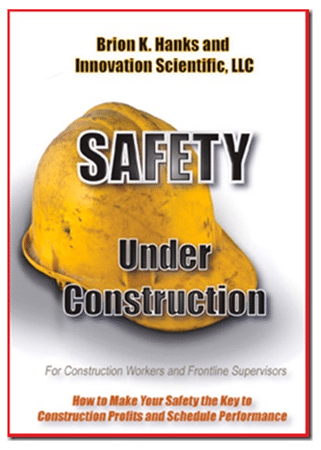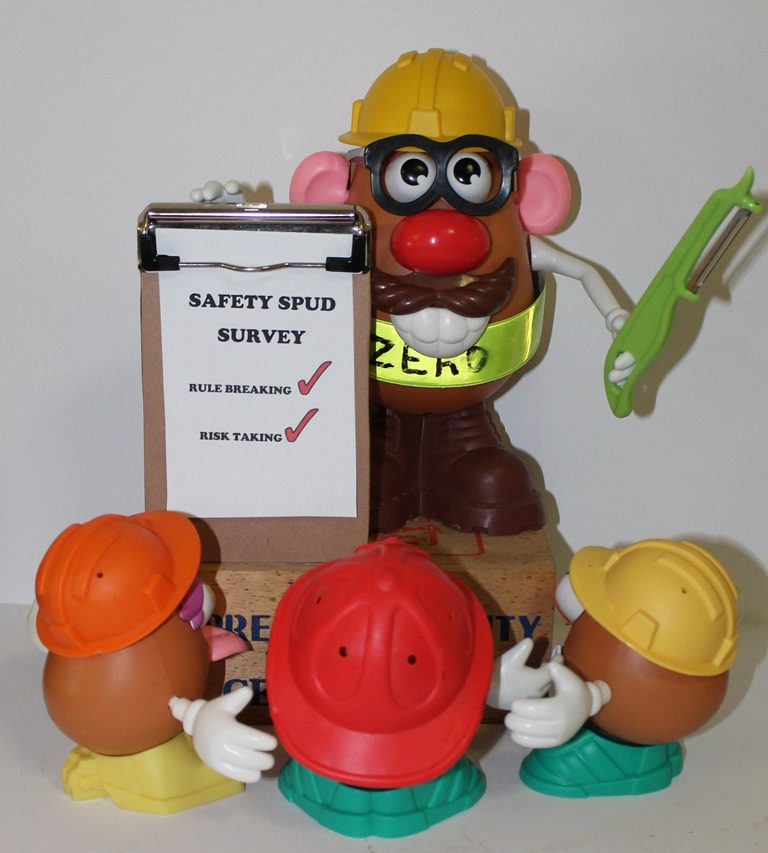New Book – Safety Under Construction
Disclaimer: This is an editorial, it is not an endorsement or advertisement and we do not gain any commercial benefit from the promotion or sale of these books.  The publishers of this new Safety Book asked me if I could run an article for them, saying that their new book was different to anything I had read before. Unfortunately, their original blurb contained the following phrase so of course I challenged them on it:
The publishers of this new Safety Book asked me if I could run an article for them, saying that their new book was different to anything I had read before. Unfortunately, their original blurb contained the following phrase so of course I challenged them on it:
The fact of the matter is you can get to zero-harm if you approach the goal scientifically and systematically, use problem-solving skills, manage your contradictions, and persist until you get what you want.
Then they responded with this and I am now thinking that this book may be worth a read (click on the image or HERE to go their website): Thanks Dave for your skepticism. It is honest and forthright. This is exactly the type of skepticism that we love because it motivated us to action. As professional innovators, we solve problems that world-class experts think are impossible. In fact, everyone we met during the research of the book said the same thing, “Even if you solve all of the other issues (and you can’t because there is too much happening on a construction site) you still are left with the problem of people. They do strange things even when they’ve been trained and even when they know better. You will never solve that.” But we did. We took a year off of consulting and researched this problem (and many more). The human issues were some of the most entrenched issues we needed to solve. Part III in the book is called “People do weird things” and we talk about the science, psychology, and hidden mindsets that create these issues. Then we give examples of how to solve these types of problems. Now that is only one part of the book. There is a lot more information. It is definitely not a codes and standards book. It is a complete shift in mindset with examples of science, technology gains, processes and systems that can move the industry to 100% zero harm. It’s not a slogan. Nor is the book a series of rules or checklists. It is a whole new way of looking at construction safety and it is a call to action. 100% zero harm is the irrefutable future coming towards the construction industry like a speeding train (okay, I am a little bit passionate about this subject; but I am not being unrealistic). Two of the authors (Dayna and Scott) were interviewed on Oregon State public TV and here is a link to that interview as it appears on YouTube. At minute 19 we talk about the very issues you bring up. If you want to spend a couple of minutes listening to that, it will ease your mind that this is no slogan-based book. The interview is 30 minutes and is all about the book; but you can move the little red circle to minute 19 and skip the rest if you want. (The link is also provide in whole at the bottom of this email so you can cut and paste if if the link is broken in the words above. This first book in the series if for workers and frontline supervisors. We expect the next book (geared to management executives and owners) to be published early this year and the one for engineers, architects, and visionary leaders to be out near the end of the year. We are still trying to decide if we need to write one slanted towards government, regulators, and public policy makers. Fear and Pain Two major factors drive unsafe behavior on the job. They are both forms of hidden compromise. To make progress, we need to bring them into the light and address them directly. The two psychological drivers are: (1) Fear and (2) Pain. [1][1] … Now let’s briefly look at pain. Physical pain can be a safety risk because pain steals attention. Physical comfort and sustained attention are both very important to safety. Yet some jobs require intense exertion that may lead to pain. Pain can also be very subtle as a cause of safety risk. For some it is “painful” to walk just an extra few feet to put on safety glasses or secure a hard hat. Change may be painful to some, making it difficult to adopt new safety measures. Some workers associate “waiting” with pain and they have poor patience. There are personality issues and psychological profiles that find it painful to relate to others except in their own specific modality. This may cause resistance to training and new measures or new people. Although this type of pain is really more psychological, it has a very real affect in the workplace as risk. Fear and pain drive decision-making, putting a person in contradiction with competing priorities. In the current situation, we can clearly see that physical and psychological fear and pain must be addressed if we are to create a safer work environment…
[1][1] Because we are innovators, we viewed hidden behavioral drivers from different points of view. Fear and Pain remained relevant no matter what view point we took. On the subject of safety, we looked through the lens of W. Edwards Deming’s ideas on Quality, took a Pavlovian view of stimulus/response conditioning, the Instinct Theory of Motivation by Williams James, Aristotle’s ideas about all living organism’s desire to pursue or avoid as basic motivation. We also considered the work of Sigmund Freud, NLP and NAC, marketing theories and other points of view. No matter what vantage point we took, when you drill down into safety to discover the hidden motivations, the most relevant are pain and fear.



Do you have any thoughts? Please share them below